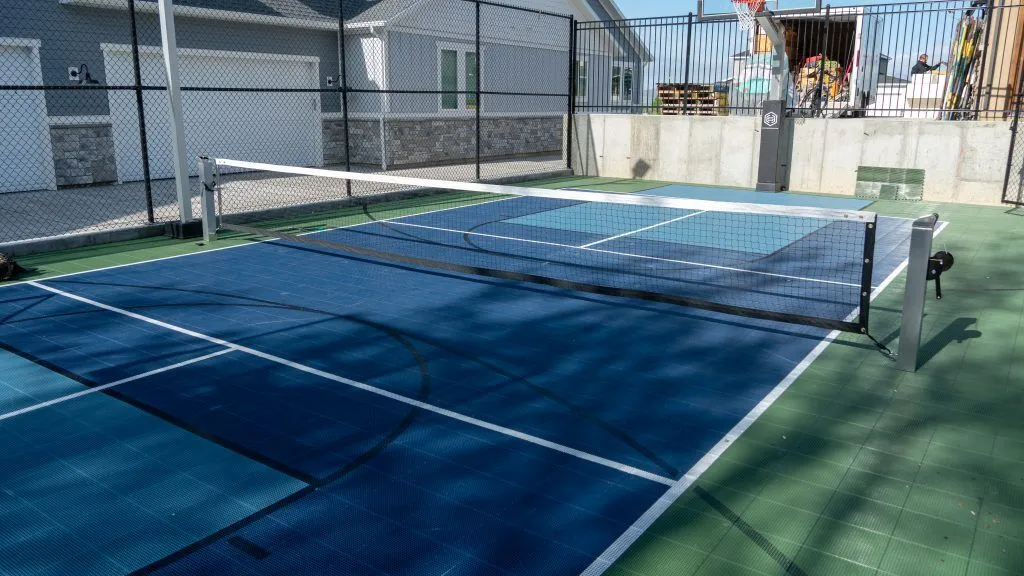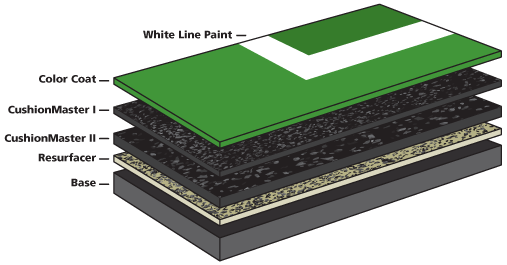Pickleball Court Construction-- Start Structure Your Perfect Court Today
Pickleball Court Construction-- Start Structure Your Perfect Court Today
Blog Article
Lasting Practices in Pickleball Court Building And Construction You Ought To Know
As the popularity of pickleball proceeds to increase, so also does the need for sustainable techniques in court building and construction. The impact of these methods expands far past the court itself.
Picking Eco-Friendly Materials
Picking eco-friendly products is an essential step in the building and construction of sustainable pickleball courts. The selection of sustainable materials not only reduces environmental impact however likewise boosts the long life and efficiency of the court. Secret materials include reused rubber for the surface area, which uses superb sturdiness and shock absorption while diverting waste from landfills.
Additionally, utilizing locally sourced materials decreases transportation emissions and supports regional economic climates. Pickleball court construction. Using indigenous hardwoods for secure fencing and seating can give a lasting aesthetic while making certain durability versus the elements.
Including permeable products for court structures can even more add to sustainability by permitting all-natural water drainage and minimizing runoff. These selections not just shield local ecosystems however additionally promote healthier play atmospheres.
Reliable Drainage Solutions
While the choice of eco-friendly materials is crucial, executing effective water drainage solutions is similarly essential for maintaining lasting pickleball courts. Correct drainage not just protects the court surface from water damage however also minimizes erosion and runoff, promoting environmental honesty.
Efficient water drainage systems can consist of absorptive paving, which enables water to infiltrate the ground as opposed to merging externally. This lowers the likelihood of standing water, which can bring about mold and mildew and various other maintenance issues. Additionally, incorporating purposefully positioned drain channels and swales can route excess water away from the court area, ensuring a dry playing surface and preventing dirt disintegration.
Using native vegetation in the landscape design around the courts can even more enhance drainage by absorbing excess water and decreasing runoff. These plants require much less irrigation and advertise biodiversity, aligning with lasting techniques.
In addition, it is crucial to regularly preserve the water drainage system to ensure its long-lasting performance. This includes clearing up particles and tracking for obstructions. By focusing on efficient drain solutions, pickleball court erectors can considerably add to the sustainability and long life of the center, eventually profiting both gamers and the setting.
Energy-Efficient Lights Options
As the demand for pickleball remains to grow, integrating energy-efficient lighting choices right into court style has actually ended up being significantly important for sustainability. Traditional lighting systems typically take in too much energy, contributing to higher operational prices and ecological influence. Therefore, taking on modern-day, energy-efficient modern technologies is crucial for both brand-new building and constructions and improvements.
LED (Light Emitting Diode) illumination stands out as a premier selection because of its durability and power cost savings (Pickleball court construction). Compared to conventional lighting, LEDs make use of roughly 75% much less energy and can last approximately 25 times longer, dramatically minimizing upkeep expenses. The directional nature of LED lights minimizes light pollution, guaranteeing that lighting is concentrated on the court instead than bordering areas.

Sustainable Surface Alternatives
Discovering lasting surface alternatives for pickleball courts has gotten grip amongst contractors and gamers alike. The focus on eco-friendly materials not just aligns with the growing environmental understanding however likewise improves the efficiency and sturdiness of the courts.
This material anonymous provides outstanding shock absorption, decreasing the danger of injuries for gamers while promoting sustainability. These floor tiles are easy to change and set up, and their versatility permits for various court setups.
All-natural grass courts are likewise becoming a lasting selection, advertising biodiversity and decreasing the warmth island result. Nevertheless, they require regular upkeep and water, which may not align with all sustainability goals.

Water Preservation Strategies

Another efficient technique includes the installment of rainwater harvesting systems. These systems collect and save rain for usage in maintaining court surfaces and landscape design. This technique not only preserves drinkable water however also lowers dependence on metropolitan resources.
Furthermore, utilizing drought-resistant landscaping around the courts is essential. Native plants call for much less water and are much better adapted to local climate problems, therefore decreasing click to read more total water consumption. In addition, utilizing effective watering systems, such as drip irrigation, makes certain that water is supplied straight to plant roots, reducing dissipation and waste.
Verdict
Integrating sustainable practices in pickleball court construction substantially adds to ecological preservation and resource effectiveness. Utilizing eco-friendly materials, her explanation implementing reliable drain solutions, and adopting energy-efficient lighting options can considerably minimize environmental impact. Discovering lasting surface options and utilizing water preservation methods enhance the overall sustainability of these leisure centers. By focusing on these techniques, the building and construction of pickleball courts can align with broader environmental objectives while advertising durability and performance within neighborhoods.
As the appeal of pickleball proceeds to rise, so too does the demand for sustainable techniques in court building and construction.Selecting environmentally friendly products is a crucial action in the construction of lasting pickleball courts. By focusing on energy-efficient lights options, pickleball court fabricators can contribute to a much more lasting future while satisfying the demands of stakeholders and gamers alike.Including lasting surface area choices not just enhances the performance of pickleball courts however also paves the means for executing reliable water preservation methods.Including lasting practices in pickleball court building significantly contributes to ecological preservation and source efficiency.
Report this page